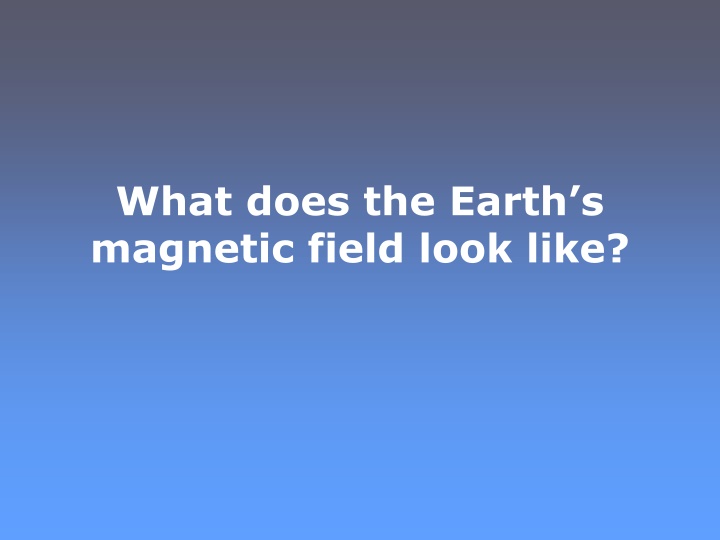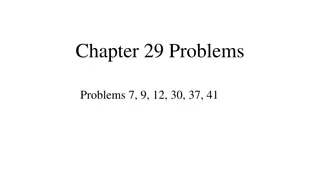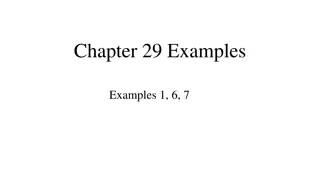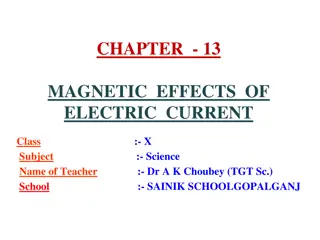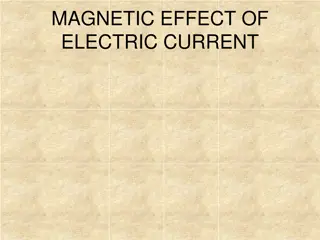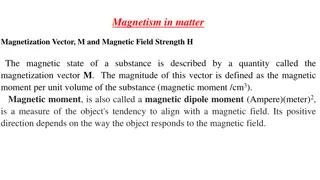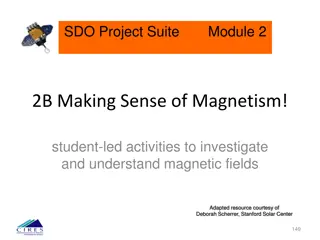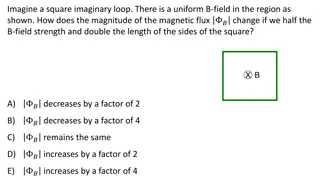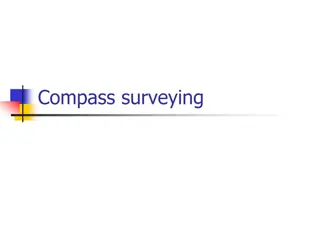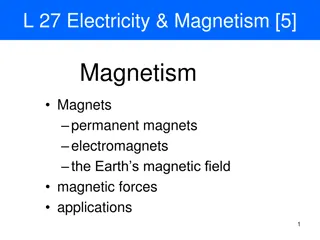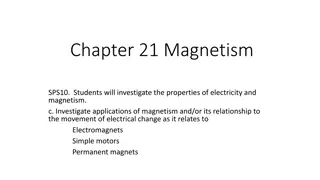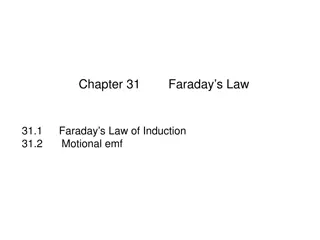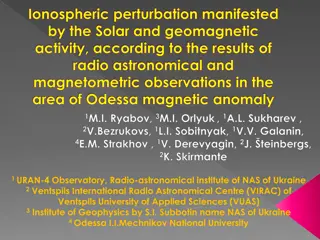Earth's Magnetic Field and Its Variations
The Earth's magnetic field is mostly dipolar and generated by convection in the outer core, resulting in a field similar to a bar magnet. It exhibits a horizontal and variable vertical component, with declination and inclination varying not only with latitude but also over time. Magnetic sensors in smartphones utilize these components for various functionalities. The field can be modeled using satellite and observatory data to provide reference fields for different locations and times. Understanding the Earth's magnetic field helps in navigation, geology, and scientific research.
Uploaded on Mar 04, 2025 | 0 Views
Download Presentation

Please find below an Image/Link to download the presentation.
The content on the website is provided AS IS for your information and personal use only. It may not be sold, licensed, or shared on other websites without obtaining consent from the author.If you encounter any issues during the download, it is possible that the publisher has removed the file from their server.
You are allowed to download the files provided on this website for personal or commercial use, subject to the condition that they are used lawfully. All files are the property of their respective owners.
The content on the website is provided AS IS for your information and personal use only. It may not be sold, licensed, or shared on other websites without obtaining consent from the author.
E N D
Presentation Transcript
What does the Earths magnetic field look like?
The Earths magnetic field The field is mostly dipolar (like a bar magnet) and generated by convection in the outer core.
Image The Earth s magnetic field The field is mostly dipolar (like a bar magnet) and generated by convection in the outer core. The magnetic pole moves around but averages to geographic pole over 1000s of years.
Image credit: Dayna Mason As well as a horizontal (north-pointing) component of the geomagnetic field, there is a variable vertical component.
Describing the magnetic field Vector field has magnitude and direction. Declination = trend Inclination = plunge (down = +ve, up= -ve)
Kent: Latitude 41N Inclination 68 Hawaii: Latitude 21 N Inclination 35 Vernadsky Base, Antarctica: Latitude 65 S Inclination -57
Because the Earths magnetic field is not completely dipolar, declination and inclination do not just vary with latitude.
The field generated by the outer core can be modelled using satellite and observatory data to produce a predicted reference field for any location and time.
Describing the magnetic field B can be resolved into horizontal and vertical components. BH = Inclination =
